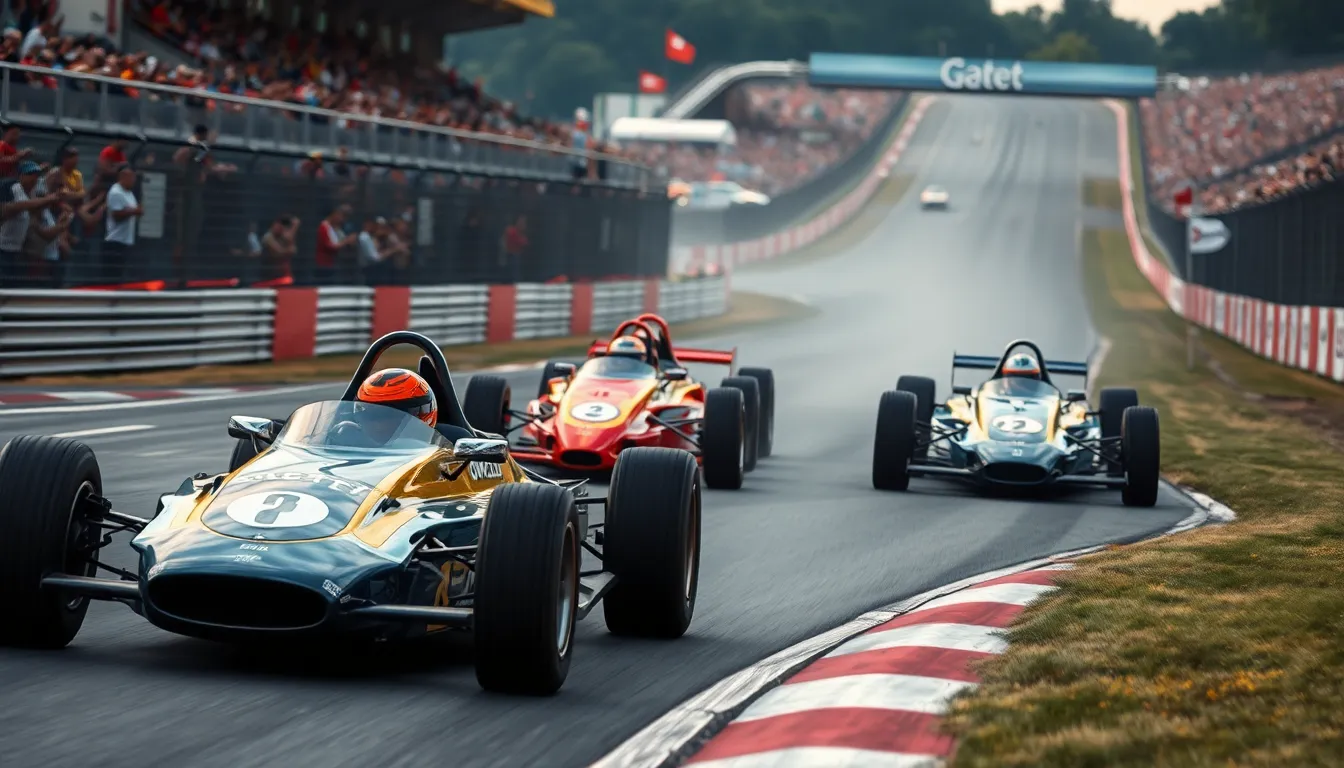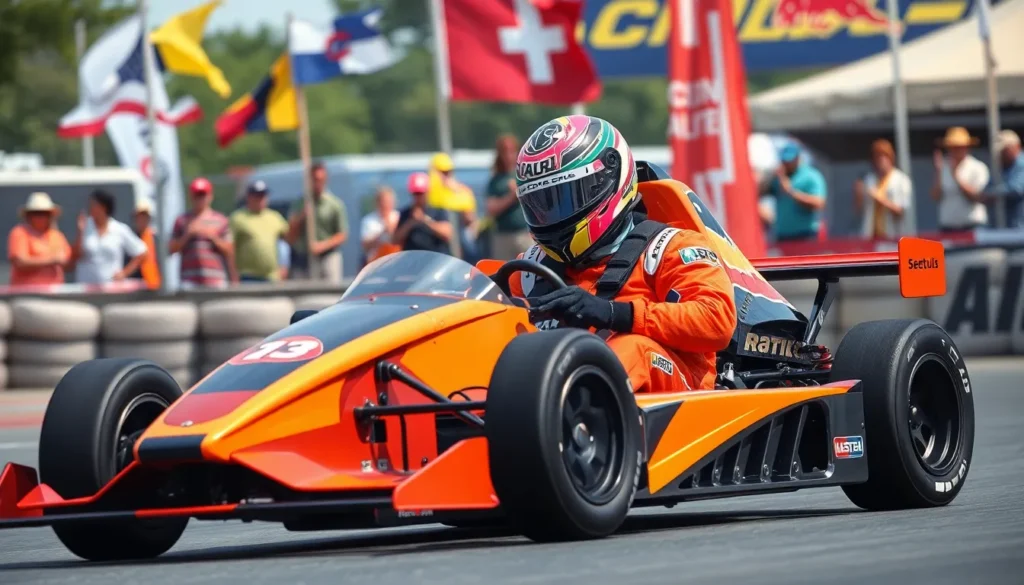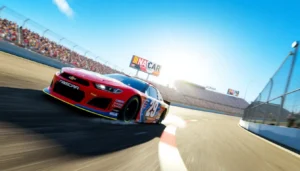When it comes to adrenaline-pumping excitement, sprint race events take the crown. Imagine the roar of engines, the smell of burning rubber, and the thrill of watching skilled drivers navigate tight corners at breakneck speeds. It’s not just a race; it’s a spectacle that leaves spectators on the edge of their seats, clutching their snacks as they cheer for their favorites.
Overview of Sprint Race Events
Sprint race events feature intense, high-speed competitions, showcasing drivers’ skills and precision. These events often occur on closed circuits, allowing participants to push their vehicles to their limits. Various types of vehicles, including cars, motorcycles, and even go-karts, compete in these races, each bringing unique characteristics and requirements.
Races typically range from short distances, like 100 meters, to longer formats of up to several kilometers. Participants hone their strategies to maximize speed while minimizing risks during each race. Crowds gather to experience the thrilling atmosphere, with spectators eager to witness the action and cheer for their favorite drivers.
Competitors rely on their vehicles’ power and handling to gain an edge on the track. The roar of engines and the swift maneuvering of vehicles create an electrifying ambiance. Many events also include qualifying rounds, where drivers attempt to secure the best starting positions based on their race times.
In sprint racing, technology plays a critical role. Advanced engineering in vehicle performance enhances speed and control, contributing to the overall excitement. Fans closely monitor statistics like lap times and speeds, illustrating the high performance on display.
Organizers often schedule various sprint race events throughout the racing season, attracting participants and fans alike. These events not only highlight the thrill of speed but also foster a sense of community among enthusiasts. Racing legends emerge from the ranks, inspiring new generations of competitors eager to join the sprint racing scene.
Types of Sprint Race Events

Sprint race events encompass various formats, each showcasing speed and skill in unique environments. Two main categories are track sprint events and road sprint events.
Track Sprint Events
Track sprint events occur on closed circuits designed specifically for racing. Participants compete on oval or purpose-built tracks, focusing on straight-line speed and precise cornering techniques. These events often feature cars, motorcycles, and go-karts, each engineered for optimal performance. Event lengths can vary, typically ranging from 100 meters to several kilometers. Drivers employ advanced strategies to gain a competitive edge while maintaining control at high speeds. Spectators experience thrilling moments as vehicles accelerate rapidly and navigate tight turns.
Road Sprint Events
Road sprint events take place on open streets or closed road sections. Competitors navigate challenging courses that often include twists, turns, and elevation changes. Vehicles used in road sprints can range from sports cars to powerful motorcycles. Distances for these events usually vary but often span several kilometers. Unlike track sprints, these events test drivers’ abilities to handle diverse road conditions. Enthusiasts enjoy the excitement of seeing competitors tackle real-world environments while showcasing their skills. Road sprint events foster a sense of connection between drivers and audiences through the shared experience of speed and adventure.
Rules and Regulations
Rules and regulations govern sprint race events, ensuring fair competition and safety for all participants.
Equipment Standards
Participants must comply with specific equipment standards. Vehicles must meet technical specifications set by the governing body, including weight, engine size, and safety features. Safety harnesses, helmets, and fire-resistant suits are mandatory for all drivers. Vehicles undergo thorough inspections before races to confirm adherence to these standards. Additionally, tire specifications, along with fuel types, face strict regulations to maintain a level playing field.
Safety Guidelines
Safety guidelines play a crucial role in sprint races. Competitors must adhere to protocols designed to minimize risks on the track. A designated crew should be present to handle any emergencies, including medical personnel ready to respond promptly. Spectators must stay within a safe distance from the track boundaries. Regular briefings ensure that all participants are informed of procedures, including flag signals and emergency exits. Communication systems must function correctly, allowing drivers to receive vital information during the race.
Benefits of Participating in Sprint Races
Participating in sprint races offers numerous advantages for drivers and enthusiasts alike. First, these events provide an opportunity to enhance driving skills. Drivers learn to navigate high-speed situations, developing precision in cornering and acceleration.
Next, sprint racing fosters a strong sense of community. Enthusiasts connect with fellow racers, sharing experiences and building friendships that often last beyond the racetrack. This camaraderie enriches the racing experience, creating lasting memories and a supportive network.
Additionally, sprint races offer unique exposure to advanced automotive technology. Participants access cutting-edge vehicle modifications and enhancements, improving their understanding of performance dynamics. This knowledge can lead to better decision-making during competitive events.
Moreover, the adrenaline rush from sprint racing can’t be understated. The thrill of competition and the responsive nature of high-speed driving create a compelling atmosphere. This excitement captivates both drivers and spectators, making every race a memorable experience.
Sprint races also benefit physical fitness. Drivers engage in rigorous physical preparation, which includes strength training and endurance exercises. These practices not only enhance performance but also promote overall health and well-being.
Finally, participating in sprint races can improve problem-solving skills. Drivers must adapt quickly to changing conditions and unexpected challenges on the track. The ability to think strategically under pressure translates to valuable skills in everyday life.
By understanding these benefits, participants can appreciate the full value of sprint racing events.
Sprint race events offer an unmatched blend of speed excitement and community engagement. They not only showcase the incredible skills of drivers but also bring together fans and enthusiasts in a shared passion for racing. The dedication to safety and fair competition ensures that every event is thrilling yet secure for all involved.
As technology continues to evolve the landscape of sprint racing, participants and spectators alike can look forward to even more exhilarating experiences. The adrenaline rush and camaraderie found in these events create lasting memories and inspire future generations to embrace the thrill of the race. Whether on the track or the road the spirit of sprint racing remains alive and vibrant.





